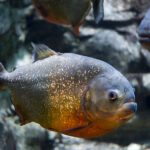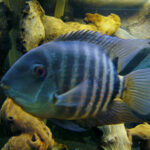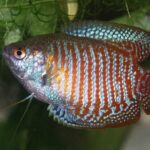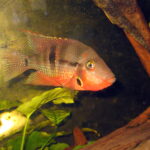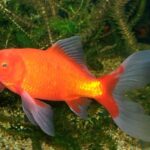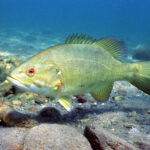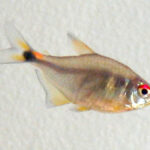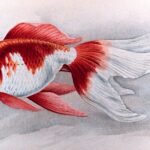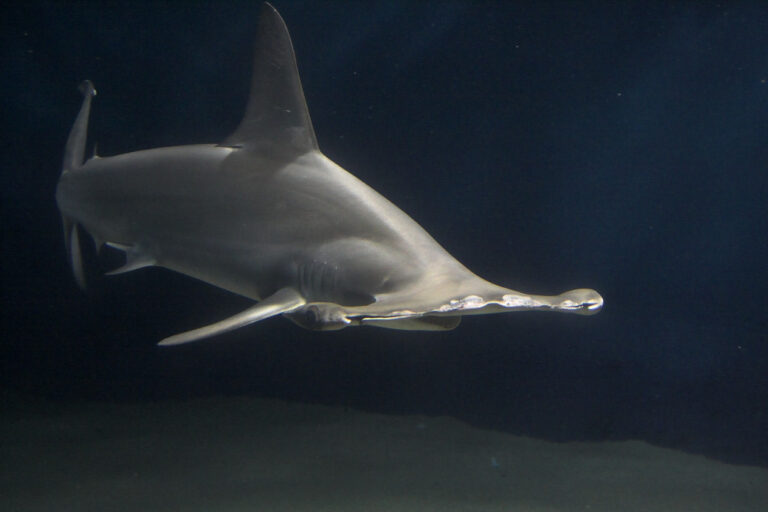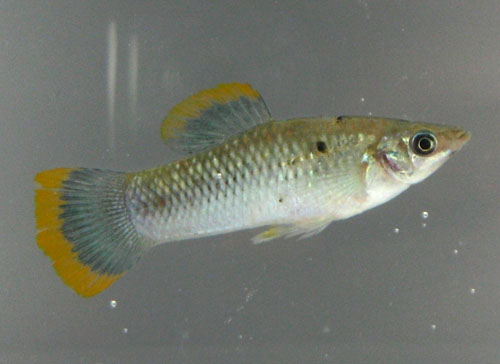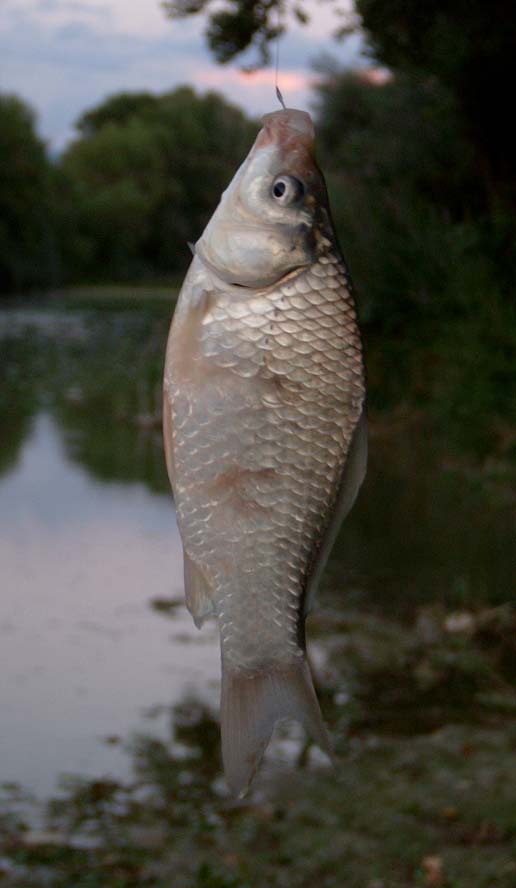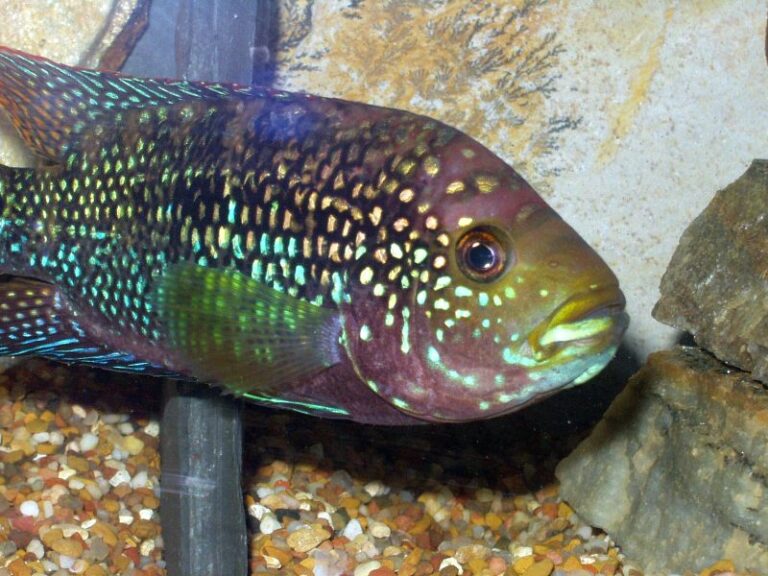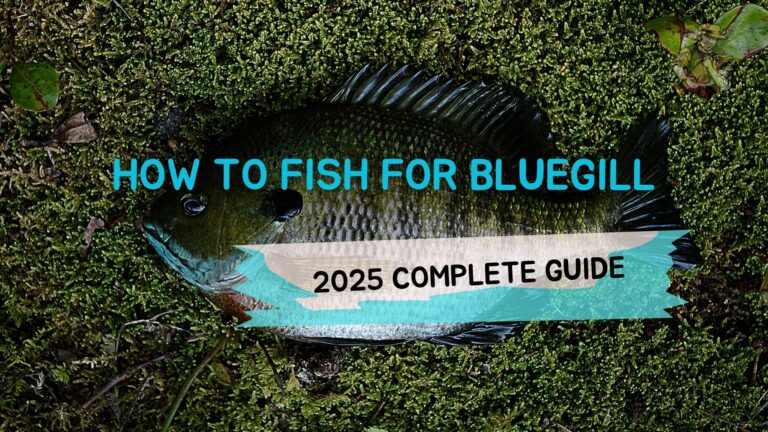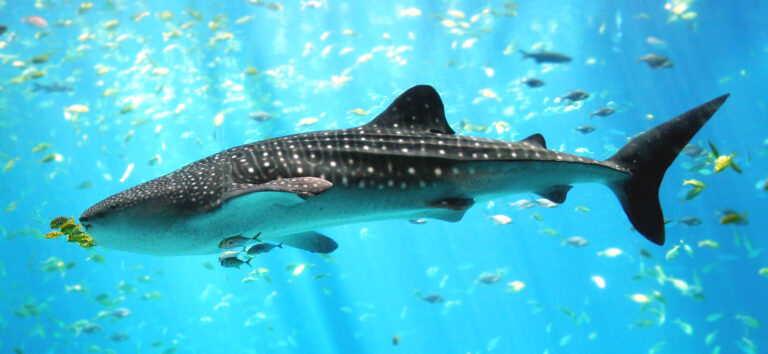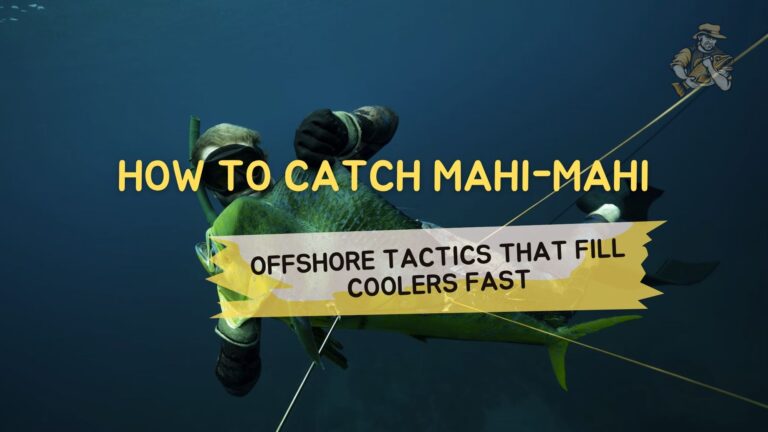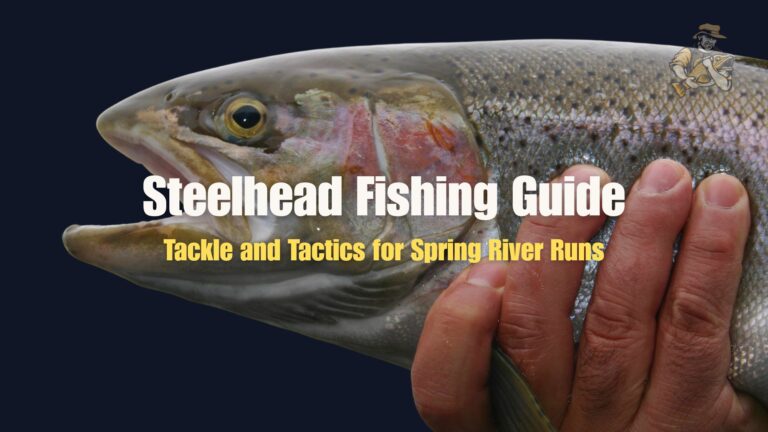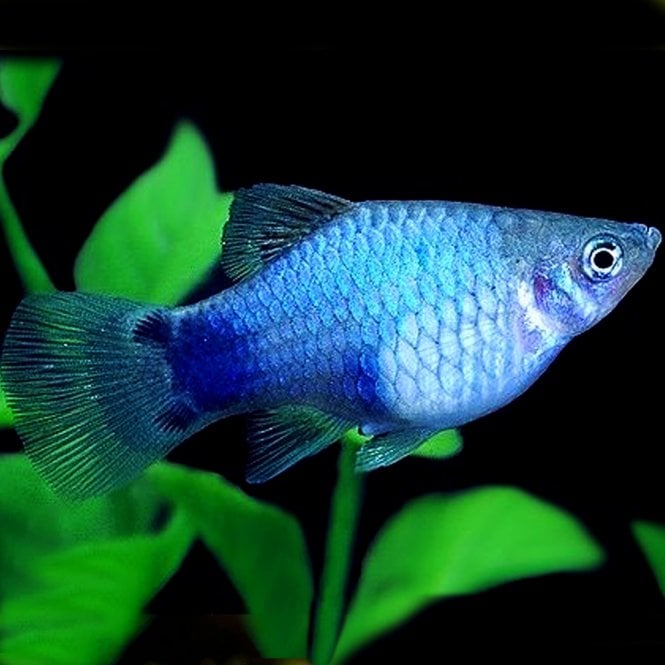Convict Cichlid
By Ryan Maron | Last Modified: June 8, 2025
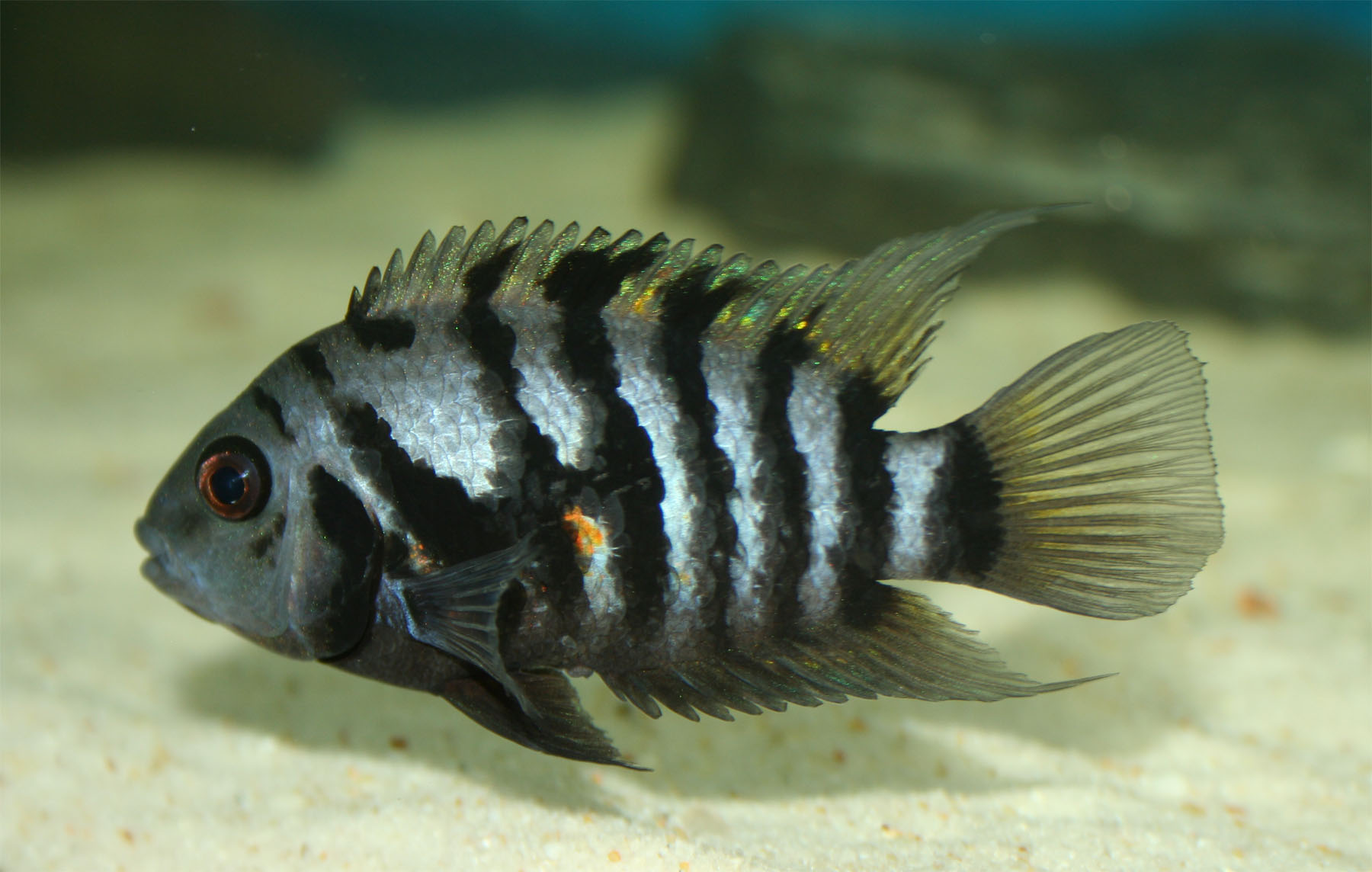
The Convict Cichlid (Amatitlania nigrofasciata) stands as one of the most recognizable and widely distributed freshwater fish species in Central American aquatic ecosystems. This distinctive cichlid derives its common name from the bold, vertical black stripes that traverse its silvery-white body, creating a pattern reminiscent of traditional prison uniforms. Native to the lakes and rivers of Central America, particularly Guatemala, El Salvador, Honduras, and Costa Rica, the Convict Cichlid has established itself as both an ecologically significant species in its natural habitat and a popular aquarium fish worldwide.
Within its native ecosystem, the Convict Cichlid serves as a crucial mesopredator, controlling populations of smaller fish, invertebrates, and aquatic insects while simultaneously providing prey for larger piscivorous species. Its aggressive territorial behavior and prolific breeding capabilities make it a keystone species in many Central American freshwater environments, where it significantly influences community structure and resource distribution. The species’ remarkable adaptability has enabled it to colonize diverse aquatic habitats, from shallow volcanic lakes to fast-flowing mountain streams.
| Feature | Details |
|---|---|
| Common Name | Convict Cichlid |
| Scientific Name | Amatitlania nigrofasciata |
| Family | Cichlidae |
| Typical Size | 8-15 cm (3-6 inches), 25-50 grams |
| Habitat | Freshwater lakes, rivers, and streams |
| Diet | Omnivorous – insects, crustaceans, plant matter |
| Distribution | Central America, introduced worldwide |
| Conservation Status | Least Concern |
Taxonomy & Classification
The Convict Cichlid belongs to the family Cichlidae, one of the largest families of freshwater fish with over 2,000 described species worldwide. Originally classified as Cichlasoma nigrofasciatum by Günther in 1867, the species underwent significant taxonomic revision throughout the 20th and early 21st centuries. Modern molecular phylogenetic studies led to its reclassification into the genus Amatitlania, established by Schmitter-Soto in 2007 to accommodate a group of Central American cichlids with distinct evolutionary characteristics.
The genus Amatitlania comprises eight recognized species, all endemic to Central American freshwater systems. Within this genus, A. nigrofasciata represents the most widespread and morphologically variable species, with several recognized subspecies and regional variants. The species exhibits considerable phenotypic plasticity across its range, leading to ongoing taxonomic discussions regarding potential cryptic species within the nigrofasciata complex.
Phylogenetic analysis places Amatitlania within the Herotilapiini tribe, part of the larger Cichlasomatinae subfamily. This classification reflects the species’ evolutionary relationships with other Neotropical cichlids and helps explain many of its behavioral and ecological characteristics. The genus shares common ancestry with other Central American cichlid genera including Cryptoheros and Hypsophrys, forming a monophyletic group that diverged approximately 15-20 million years ago during the Miocene epoch.
Physical Description
The Convict Cichlid displays a robust, laterally compressed body typical of the cichlid family, with males reaching maximum lengths of 15 centimeters while females generally remain smaller at 8-12 centimeters. The species’ most distinctive feature consists of 8-9 vertical black bars or stripes that extend from the dorsal region to the ventral surface, creating the characteristic “convict” pattern against a silvery-white to pale yellow base coloration. These bars vary in intensity and width depending on the fish’s emotional state, breeding condition, and environmental factors.
Sexual dimorphism becomes pronounced in mature individuals, with males developing extended dorsal and anal fin filaments that can extend well beyond the caudal fin margin. Adult males also exhibit a more prominent nuchal hump, particularly during breeding periods, and display more intense coloration overall. Females typically show brighter orange to red coloration on the ventral region, especially around the pelvic and anal fins, which becomes particularly vivid during spawning periods.
The species possesses a terminal mouth equipped with pharyngeal teeth adapted for processing both plant and animal matter. The gill rakers are relatively short and widely spaced, reflecting the species’ omnivorous feeding strategy. Body coloration can vary significantly based on geographical origin, with some populations exhibiting blue, green, or purple iridescence on the scales, while others may show enhanced yellow or orange pigmentation. Albino and leucistic variants occur naturally in some populations and have been selectively bred in captivity.
Habitat & Distribution
Amatitlania nigrofasciata naturally inhabits the freshwater systems of Central America, with its native range extending from Guatemala through El Salvador, Honduras, Nicaragua, and into northern Costa Rica. The species demonstrates remarkable habitat versatility, occupying environments ranging from shallow volcanic crater lakes at elevations exceeding 1,000 meters to lowland river systems near sea level. Water parameters in native habitats typically include temperatures between 22-28°C, pH values from 7.0-8.5, and moderate to high mineral content reflecting the volcanic geology of the region.
Natural populations thrive in structurally complex environments featuring rocky substrates, submerged logs, and dense aquatic vegetation. The species shows particular affinity for areas with moderate to strong water flow, where it establishes territories among crevices and cave-like structures. In lake environments, Convict Cichlids typically inhabit nearshore zones with depths ranging from 0.5-10 meters, preferring areas with mixed substrate composition including sand, gravel, and rocky outcroppings.
Human activities have facilitated the species’ introduction to numerous countries outside its native range, including the United States, Australia, and several Asian nations. Established populations now exist in Florida, Texas, and Hawaii, where the species has adapted to local conditions and integrated into existing fish communities. These introduced populations often occupy similar ecological niches to their native counterparts, demonstrating the species’ exceptional adaptability and competitive ability in novel environments.
Diet & Feeding Behavior
The Convict Cichlid exhibits omnivorous feeding behavior with a diet composition that varies seasonally and according to habitat characteristics. Primary food sources include aquatic insects and their larvae, small crustaceans, mollusks, and various forms of algae and plant matter. Stomach content analyses from wild populations reveal that chironomid larvae, mayfly nymphs, and small gastropods constitute significant portions of the diet, particularly during the dry season when prey density concentrates in available water bodies.
Foraging behavior demonstrates considerable flexibility, with individuals employing multiple feeding strategies depending on prey availability and environmental conditions. The species engages in benthic foraging, systematically searching substrate surfaces for invertebrates and organic detritus. During periods of high insect emergence, Convict Cichlids may adopt surface feeding behaviors, capturing adult insects and other arthropods that fall onto the water surface.
Territorial adults establish feeding territories that they defend vigorously against conspecifics and other fish species. These territories typically encompass areas with high prey density or abundant algal growth, allowing dominant individuals to maintain consistent access to food resources. Juvenile and subordinate individuals often feed opportunistically in marginal areas or during periods when territorial fish are distracted by breeding activities. The species demonstrates notable dietary plasticity in introduced environments, readily incorporating novel prey items and adapting to local food webs.
Behavior & Adaptations
Convict Cichlids exhibit complex social behaviors characterized by strong territoriality, particularly during breeding periods when established pairs defend areas up to several square meters in extent. Aggressive interactions include lateral displays, mouth fighting, and chase behaviors directed toward both conspecifics and heterospecific intruders. The intensity of territorial defense varies with breeding stage, resource availability, and population density, with peak aggression occurring during spawning and early fry care periods.
The species demonstrates remarkable environmental adaptability, tolerating wide ranges of water chemistry, temperature fluctuations, and habitat modifications. This adaptability stems from physiological mechanisms including efficient osmoregulation, behavioral thermoregulation, and dietary flexibility. Convict Cichlids can survive in water temperatures ranging from 15-35°C for extended periods and tolerate pH values from 6.0-9.0, though optimal conditions promote better growth and reproductive success.
Communication systems incorporate visual displays, acoustic signals, and chemical cues. Visual displays include color changes, fin positioning, and body posturing that convey information about reproductive status, territorial ownership, and threat assessment. Similar behavioral patterns are observed across angelfish and other cichlid species, reflecting shared evolutionary adaptations within the family. Acoustic communication involves low-frequency sounds produced during aggressive encounters and courtship behaviors, while chemical signals likely play roles in individual recognition and reproductive synchronization.
Reproduction & Life Cycle
Convict Cichlids reach sexual maturity at approximately 6-12 months of age, depending on environmental conditions and nutritional status. The species exhibits monogamous pair bonding during breeding seasons, with established pairs often maintaining territories for extended periods. Courtship behaviors include synchronized swimming, substrate cleaning, and elaborate visual displays where both partners intensify their coloration and extend their fins.
Spawning typically occurs on cleaned hard surfaces such as rocks, logs, or cave walls within established territories. Females deposit 100-300 adhesive eggs in organized rows while males simultaneously release sperm for external fertilization. Both parents participate in brood care, with females primarily responsible for egg fanning and cleaning while males focus on territory defense. Eggs hatch after 3-4 days at temperatures around 26-28°C, producing larvae that remain attached to the substrate for an additional 4-5 days while absorbing their yolk sacs.
Free-swimming fry receive intensive parental care for 4-6 weeks, during which both parents guide the school, provide protection from predators, and may engage in food preparation behaviors. Parents often move fry between different microhabitats to optimize feeding opportunities and minimize predation risk. This extended parental care significantly enhances fry survival rates compared to species without such behaviors. Sexual dimorphism in parental roles becomes particularly evident during this period, with females showing enhanced protective behaviors while males maintain broader territorial surveillance.
Predators & Threats
In native Central American waters, adult Convict Cichlids face predation from larger piscivorous fish including snook, tarpon, and larger cichlid species such as Parachromis and Petenia. Juvenile fish are vulnerable to a broader range of predators including smaller piscivorous species, aquatic birds such as herons and kingfishers, and invertebrate predators like dragonfly larvae and predaceous diving beetles. The species’ territorial behavior and aggressive nature provide some protection against predators, particularly during breeding periods when parental fish demonstrate remarkable defensive behaviors.
Habitat modification represents the primary anthropogenic threat to native populations, with dam construction, agricultural runoff, and urban development significantly altering Central American freshwater ecosystems. Water pollution from agricultural pesticides and industrial discharge has documented negative effects on Convict Cichlid populations, particularly in heavily developed watersheds. Climate change impacts, including altered precipitation patterns and increased temperature extremes, may affect breeding success and habitat availability in some regions.
Paradoxically, the species’ success as an invasive organism in introduced environments demonstrates its resilience to many environmental stressors. However, intensive collection for the aquarium trade has impacted some native populations, particularly those with unique color variants or geographical isolation. Disease outbreaks, including viral and bacterial infections, can affect dense populations in both natural and artificial environments, though the species generally shows good disease resistance compared to many other tropical freshwater fish.
Conservation Status
The International Union for Conservation of Nature (IUCN) classifies Amatitlania nigrofasciata as “Least Concern” based on the species’ wide distribution, stable population trends, and remarkable adaptability to environmental changes. Native populations throughout Central America remain relatively stable despite localized habitat modifications and collection pressures. The species’ broad ecological tolerance and high reproductive potential provide resilience against most conservation threats.
However, specific populations or subspecies may face more significant conservation challenges. Endemic varieties from isolated lake systems, such as those found in some Guatemalan crater lakes, could be vulnerable to habitat degradation or genetic dilution from introduced individuals. Conservation biologists emphasize the importance of protecting native genetic diversity, particularly given the species’ high degree of phenotypic variation across its natural range.
Regional conservation efforts focus primarily on habitat protection and water quality maintenance rather than species-specific programs. The Convict Cichlid benefits from broader freshwater ecosystem conservation initiatives throughout Central America, including the establishment of protected areas and water quality monitoring programs. In introduced environments, management efforts typically focus on population control rather than conservation, as established populations can negatively impact native fish communities through competition and predation.
Human Interaction
The Convict Cichlid ranks among the most popular freshwater aquarium fish worldwide, prized for its striking appearance, interesting behaviors, and relatively simple care requirements. The global aquarium trade has established breeding populations in numerous countries, reducing collection pressure on wild populations while providing economic opportunities for commercial fish farms. Captive breeding programs have produced numerous color variants and selectively bred strains that differ significantly from wild-type individuals.
In subsistence fishing communities throughout Central America, Convict Cichlids provide supplemental protein and income through small-scale harvest for local consumption. Traditional fishing methods include hook and line, small nets, and fish traps designed to capture cichlids in shallow nearshore areas. The species’ aggressive nature and territorial behavior make it relatively easy to locate and capture using traditional techniques. Many fishing tips for beginners include targeting aggressive species like cichlids as good practice fish.
Scientific research applications utilize Convict Cichlids extensively as model organisms for studies of behavior, ecology, and evolution. The species’ complex social behaviors, parental care systems, and territorial interactions make it valuable for research into animal communication, mating systems, and evolutionary ecology. Laboratory colonies maintained at universities and research institutions worldwide contribute to our understanding of cichlid biology and freshwater ecosystem dynamics.
Interesting Facts
Convict Cichlids demonstrate remarkable problem-solving abilities and can be trained to recognize individual humans, respond to visual cues, and navigate complex maze environments. Research has documented their ability to use tools, such as moving small objects to access food or modify their environment for nest construction. This cognitive complexity reflects the advanced behavioral repertoire typical of cichlid species and contributes to their success in diverse environments.
The species exhibits unusual cooperative breeding behaviors in some populations, where previous offspring may remain with parents to help care for subsequent broods. This “helper” behavior is relatively rare among fish species and represents an advanced form of social organization. Helpers assist with territory defense, predator detection, and fry guidance, significantly improving overall reproductive success of the family group.
Color pattern inheritance in Convict Cichlids follows complex genetic pathways involving multiple genes and environmental influences. Some populations exhibit polychromatism, where multiple distinct color forms coexist in the same habitat. These variants may represent early stages of speciation or adaptive responses to different ecological conditions within the same water body. Genetic studies suggest that color pattern genes may be linked to behavioral traits, creating integrated phenotypic packages that influence both appearance and behavior.
Temperature-dependent sex determination occurs in some Convict Cichlid populations, where incubation temperature during early development influences the sex ratio of offspring. This mechanism allows parents to potentially manipulate offspring sex ratios in response to environmental conditions, representing a sophisticated reproductive adaptation rarely documented in freshwater fish species.
Frequently Asked Questions
How aggressive are Convict Cichlids compared to other cichlid species?
Convict Cichlids rank as moderately to highly aggressive among cichlid species, particularly during breeding periods when they establish and defend territories. Their aggression levels are comparable to other Central American cichlids but generally less intense than large predatory species like Parachromis or Petenia. However, their persistent territorial behavior and willingness to attack much larger fish make them unsuitable for community aquariums with peaceful species.
Can Convict Cichlids survive in outdoor ponds in temperate climates?
Convict Cichlids can survive in outdoor ponds during warm months in temperate climates but require indoor overwintering in regions where water temperatures drop below 15°C. Some established populations in southern United States demonstrate the species’ ability to adapt to seasonal temperature variations, though prolonged exposure to temperatures below 10°C typically proves fatal. Successful outdoor cultivation requires pond depths exceeding 1.5 meters to provide thermal refugia during temperature extremes.
What makes Convict Cichlids successful as invasive species?
Several characteristics contribute to the Convict Cichlid’s success as an invasive species, including broad environmental tolerance, aggressive territorial behavior, extended parental care, and omnivorous feeding habits. Their ability to rapidly establish breeding populations, defend prime habitat areas from native species, and adapt to novel food sources allows them to integrate into existing fish communities and often become dominant members of the ecosystem.
How can you distinguish between male and female Convict Cichlids?
Adult male Convict Cichlids develop longer, more pointed dorsal and anal fins with extended filaments, grow larger overall, and exhibit a prominent nuchal hump during breeding periods. Females typically display brighter orange or red coloration on the belly and fins, remain smaller in size, and show more rounded body profiles. Juvenile fish are difficult to sex accurately until they reach approximately 5-7 centimeters in length and begin developing secondary sexual characteristics.
Conclusion
The Convict Cichlid represents a remarkable example of adaptive success in freshwater environments, demonstrating how behavioral complexity, reproductive strategies, and ecological flexibility combine to create a highly successful species. While their conservation status remains stable, the species’ role as both a valuable aquarium fish and potentially problematic invasive species highlights the complex relationships between human activities and aquatic biodiversity. Understanding the ecology and behavior of species like A. nigrofasciata provides crucial insights into freshwater ecosystem dynamics and the factors that determine species success in an increasingly modified world.
Share The Article:
More Fish Species:
-
Hammerhead Shark
The Hammerhead Shark represents one of the most distinctive and fascinating apex predators in marine ecosystems worldwide. These remarkable…
-
Gold Dust Molly
The Gold Dust Molly (*Poecilia sphenops*) represents one of the most popular and visually striking freshwater aquarium fish available…
-
Pelagic Thresher Shark
The Pelagic Thresher Shark stands as one of the ocean’s most distinctive and efficient predators, renowned for its dramatically…
-
Goldfish
The goldfish (Carassius auratus) stands as one of the most culturally significant and scientifically fascinating species in freshwater aquaculture…
-
Jack Dempsey Fish
The Jack Dempsey Fish stands as one of Central America’s most distinctive cichlid species, captivating aquarists and researchers alike…
-
Spinner Shark
The Spinner Shark (Carcharhinus brevipinna) stands as one of the ocean’s most distinctive and acrobatic predators, earning its name…
Discover
-
How to Fish for Bluegill: 2025 Complete Guide
Bluegill might not be the biggest fish in the pond, but they sure make up for it in fight…
-
Beluga Fishing: Techniques That Actually Work (Not Theory)
When it comes to beluga fishing, there’s a world of difference between what you read in theory and what…
-
Whale Shark
The whale shark (*Rhincodon typus*) stands as the ocean’s largest fish species, representing one of nature’s most remarkable gentle…
-
How to Catch Mahi-Mahi: Offshore Tactics That Fill Coolers Fast
I still remember my first encounter with mahi-mahi (also called dolphin fish or dorado). We were about 20 miles…
-
New York Fishing License: Costs, Types & Where to Buy in 2025
Figuring out fishing licenses can be a headache, especially when you’re just eager to get out on the water….
-
Yellowfin VS Bluefin Tuna: Which Should You Target? (Expert Guide)
Let’s be honest – the first time I saw a yellowfin and bluefin tuna side by side at the…
Discover
-
Steelhead Fishing Guide: Tackle and Tactics for Spring River Runs
There’s something almost magical about standing waist-deep in a frigid spring river, feeling the current push against your legs…
-
Blue Platy
The Blue Platy (Xiphophorus maculatus) stands as one of the most recognizable and culturally significant freshwater fish species in…
-
Pearl Gourami
The Pearl Gourami stands as one of the most recognizable and ecologically significant members of the labyrinth fish family,…
-
How to Use a Spinnerbait: Complete Guide for Beginners
In my three decades of fishing experience, I’ve found few lures as versatile and effective as the humble spinnerbait….
-
Largemouth Bass
The Largemouth Bass, scientifically known as *Micropterus salmoides*, stands as one of North America’s most iconic freshwater gamefish and…
-
North Jersey Fishing Guide: Best Lakes, Rivers & Seasons
If you’ve never experienced the fishing in North Jersey, you’re missing out on some genuinely underrated angling opportunities. From…


